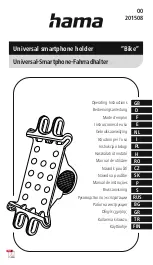
The regulator operates manually but operates incorrectly when
set on automatic
Manually run the regulator to the neutral position. Check for
voltage between the bottom of the
V1
switch and
G
. This
is the sensing circuit supplying voltage from the output of
RCT1
on the rear panel. If this voltage is more than 10%
above or below the programmed voltage level setting of
the control, then the source is beyond the range of the
regulator. An absence of voltage would indicate a wiring
problem such as an open somewhere in the control power
supply. If these checks are correct, perform the following:
1. If the control will not operate automatically, verify that
the band edge indicators are functioning. (These are the
OUT-OF-BAND HIGH
and
OUT-OF-BAND LOW
LEDs
located on the front panel.) If they are not functioning,
check FC 56, Reverse Sensing Mode. Set it to
Locked
Forward
if it is not there already. Retry the automatic
mode of operation.
2. Verify that FC 69, Auto Blocking is set to
Normal
. Retry
the automatic mode of operation.
3. Measure the voltage from
VS
to
G
on
TB3
(or on the
lower terminal board
TB2
if present).
A. A measurement of approximately the set voltage
value between
VS
and
G
indicates that the
problem is in the control.
B. If there is no voltage present between
VS
and
G
, the trouble is in the V1 disconnect or the ratio-
correcting transformer of the back-panel circuit.
Replace them.
4. Check the holding switch circuit.
A. Verify that the tap-changer will complete a tap
change by placing the
CONTROL FUNCTION
switch to
LOCAL Manual
and toggling the
Raise/
Lower
switch in the desired direction.
B. If the
Raise/Lower
switch must be held in the
Raise
or
Lower
position to complete a tap change,
the problem is in the holding switch circuit. If the
holding switch is not working, a Quik-Drive tap-
changer will do multiple taps until the tap change
time-out occurs.
C. Check for voltage between
TB3-HS
and
G
(
TB1-HS
or
TB2-HS
if they are present and
G
). When TB1
and TB2 are present, if voltage is present at
TB1-
HS
and not on
TB2-HS
, the problem is in the back
panel wiring harness. Replace the orange
HS
lead
from
TB1-HS
to
TB2-HS
. If no voltage is present
at
TB3-HS
(or
TB1-HS
when present), the problem
is in the control cable, junction box cover, or the
holding switch (located inside the regulator) itself.
Check cable continuity up to the junction box.
If it appears normal, the problem is the holding
switch. To replace the holding switch, see
documents
S225-12-1 QD3 Quik-Drive Voltage
Regulator Tap-Changer Manual, MN225012EN
QD5 Quik-Drive Voltage Regulator Tap-Changer
Manual
, and
MN225011EN QD8 Quik-Drive
Voltage Regulator Tap-Changer Installation and
Maintenance Instructions
. If all appears to be in
order, the problem is most likely in the control, not
in the holding switch.
Check FC 56, reverse sensing mode
When there is no load current and the regulator will not
operate in automatic, check the
C
switch on the back panel.
If the
C
switch is closed and FC 56 is set for
Bi-directional
,
the regulator will not operate in automatic. The
C
switch
should be open for normal operation.
Check FC 69, auto operation blocking status
1. Check the
CONTROL FUNCTION
switch. The switch
should be on
AUTO/REMOTE
.
2. Verify that FC 69 is set to
Normal
. To check the FC 69
setting:
FUNC
,
69
,
ENTER
.
3. If not on
Normal
and resetting is blocked by the
security feature, enter the security code via the keypad
to change the blocking status:
A.
FUNC
,
99
,
ENTER
;
Admin
(default),
ENTER
.
B.
FUNC
,
69
,
ENTER
.
C.
EDIT
, Scroll to
Normal
,
ENTER
.
Check FC 170, Tap-to-Neutral
1. Verify that FC 170 is set to
Off
. To check the FC 170
setting:
FUNC
,
170
,
ENTER
.
2. If not set to
Off
and resetting is blocked by the security
feature, enter the security code via the keypad to
change the blocking status:
A.
FUNC
,
99
,
ENTER
;
Admin
(default),
ENTER
.
B.
FUNC
,
170
,
ENTER
.
C.
EDIT
, Scroll to
Off
,
ENTER
.
Testing with the voltage limiter ON and a limit value set
NOTICE
Equipment Damage . Be mindful of polarity when using
an external source . Polarity reversal will result in control
damage .
VR-T201 .0
When testing a regulator with external power, it is
recommended that FC 80, Voltage Limiter Mode be set to
Off
.
When testing in the auto mode with the voltage limiter on,
there may be problems getting the regulator to operate
in either raise or lower direction if the external voltage is
greater than the voltage limit settings.
162
INSTALLATION, OPERATION, AND MAINTENANCE INSTRUCTIONS
MN225003EN April 2018
CL-7 Voltage Regulator Control
















































